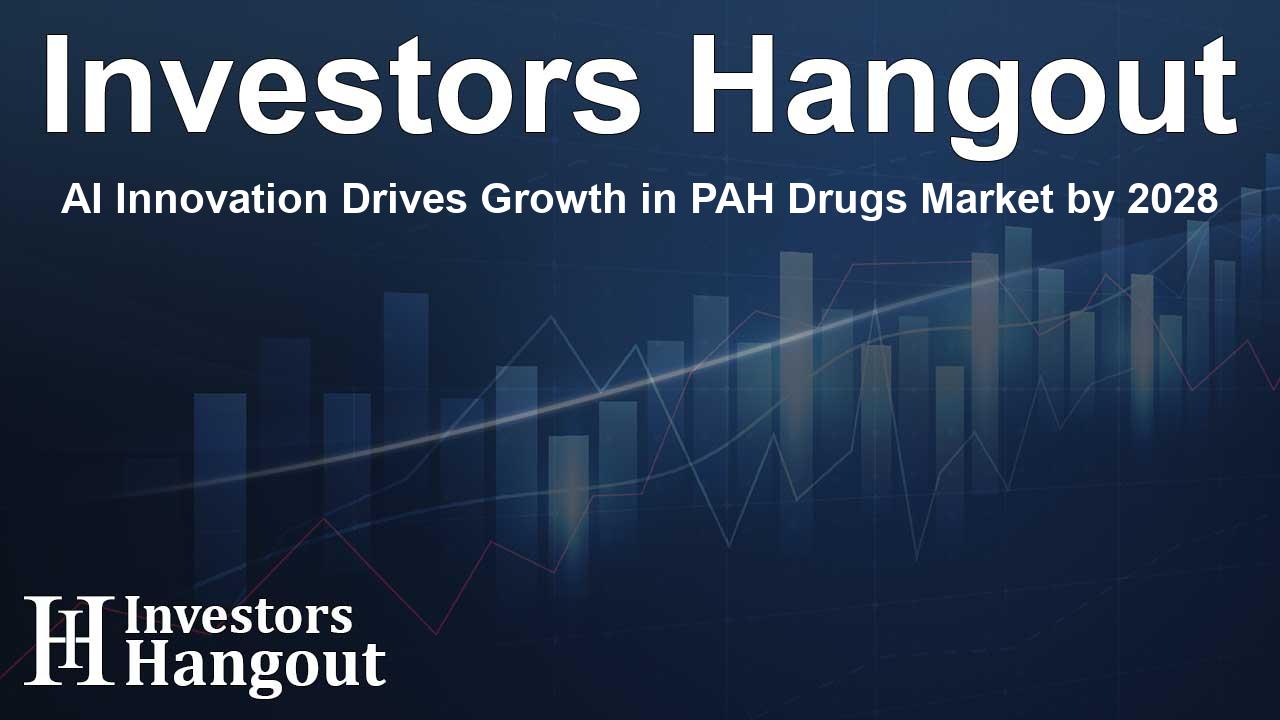AI Innovation Drives Growth in PAH Drugs Market by 2028

Growth of the Pulmonary Arterial Hypertension Drugs Market
The pulmonary arterial hypertension (PAH) drugs market is experiencing a notable upward trend, projected to expand by USD 2.26 billion during the upcoming years. This growth can be attributed to the rising incidence of PAH, coupled with the development of advanced therapeutics that are reshaping treatment protocols. The emphasis on awareness and education about this condition is also playing a pivotal role in driving demand for effective treatments.
Understanding Pulmonary Arterial Hypertension
Pulmonary Arterial Hypertension is categorized as a rare but progressive disorder marked by increased blood pressure within the pulmonary arteries, which are responsible for transporting blood from the heart to the lungs. As these arteries narrow or block, they hinder blood flow, resulting in heightened pressure and significant complications. The prevalence of PAH has been linked to several risk factors, including HIV, sedentary lifestyles, and substance use, leading to a pressing need for effective drug therapies.
Current Market Landscape
The PAH drugs market is currently valued at an ambitious rate and is forecasted to achieve a compound annual growth rate (CAGR) of 6.78%. This surge is propelled by both the increasing number of diagnosed cases and the introduction of innovative medications aimed at managing this complex condition. Key industry players such as Aerami Therapeutics Holdings Inc., AstraZeneca Plc., and Merck and Co. Inc. are at the forefront, contributing to market advancements through their vast product portfolios.
Emerging Trends and Innovations
Market trends indicate a significant shift towards the utilization of Prostacyclin and Nitric Oxide pathways to enhance treatment efficacy. The geriatric population represents a significant patient demographic for PAH therapies, making it crucial for healthcare providers to adopt effective drug delivery systems. Furthermore, the current landscape is also witnessing increased investment in clinical trials aimed at innovative treatment modalities. This includes potential vaccine projects and explorations into the effects of comorbid conditions like obesity and other cardiovascular diseases on PAH.
Challenges within the Market
Despite promising market growth, the PAH treatment landscape faces various challenges. Patients diagnosed with PAH endure significant financial burdens due to the high cost of medications. With treatment prices ranging significantly—e.g., from USD 56,000 for some therapies to upwards of USD 180,000 annually—accessibility remains a critical concern. The limited patient pool further complicates the development of therapies, compelling companies to prioritize orphan drug classification, which requires significant regulatory navigation. Additionally, mental health complications associated with chronic illness also pose added layers of difficulty in patient care.
Looking Ahead: The Role of AI in Market Development
Artificial intelligence is emerging as a transformative force within the PAH drugs market. By harnessing AI technologies to analyze vast amounts of data, companies can better identify treatment patterns and patient needs, ultimately enhancing the efficacy of existing and future therapies. This integration of AI not only augments drug development processes but also facilitates personalized medicine approaches tailored to individual patient profiles.
Conclusion
The PAH drugs market is poised for substantial growth propelled by increasing awareness, innovative drug development, and the utilization of AI in enhancing treatment methodologies. Continued collaboration among stakeholders in the healthcare ecosystem will be critical to overcoming existing challenges and improving patient outcomes.
Frequently Asked Questions
What is pulmonary arterial hypertension?
Pulmonary arterial hypertension (PAH) is a rare and progressive condition characterized by high blood pressure in the pulmonary arteries, leading to serious health complications.
How is the PAH drugs market expected to grow?
The PAH drugs market is anticipated to grow by USD 2.26 billion from 2024 to 2028, driven by rising prevalence and innovative treatments.
What challenges does the PAH market currently face?
The PAH market faces challenges such as high treatment costs, limited patient populations, and the need for specialized drug development.
How is AI influencing the PAH drugs market?
AI is revolutionizing the PAH drugs market by improving data analysis, enhancing drug development efficiency, and contributing to personalized treatment approaches.
Why is early diagnosis critical for PAH?
Early diagnosis of PAH is essential for implementing timely treatment, which can significantly improve patients' quality of life and clinical outcomes.
About Investors Hangout
Investors Hangout is a leading online stock forum for financial discussion and learning, offering a wide range of free tools and resources. It draws in traders of all levels, who exchange market knowledge, investigate trading tactics, and keep an eye on industry developments in real time. Featuring financial articles, stock message boards, quotes, charts, company profiles, and live news updates. Through cooperative learning and a wealth of informational resources, it helps users from novices creating their first portfolios to experts honing their techniques. Join Investors Hangout today: https://investorshangout.com/
Disclaimer: The content of this article is solely for general informational purposes only; it does not represent legal, financial, or investment advice. Investors Hangout does not offer financial advice; the author is not a licensed financial advisor. Consult a qualified advisor before making any financial or investment decisions based on this article. The author's interpretation of publicly available data shapes the opinions presented here; as a result, they should not be taken as advice to purchase, sell, or hold any securities mentioned or any other investments. The author does not guarantee the accuracy, completeness, or timeliness of any material, providing it "as is." Information and market conditions may change; past performance is not indicative of future outcomes. If any of the material offered here is inaccurate, please contact us for corrections.